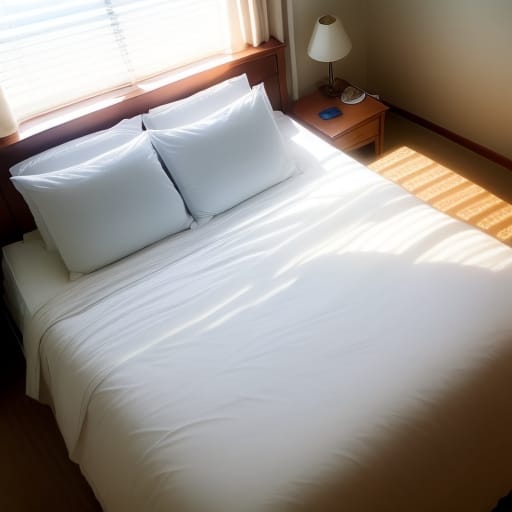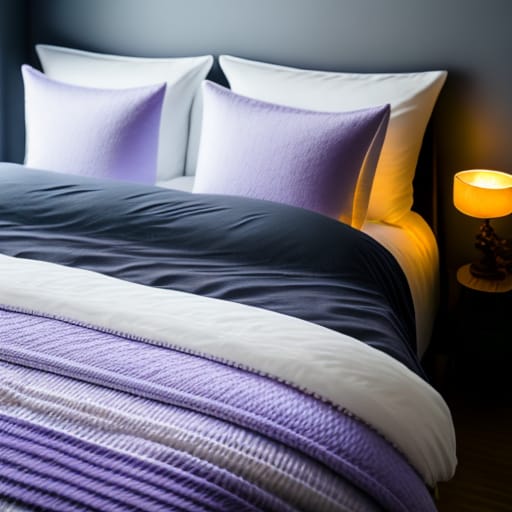Have you found yourself nestled under a hotel’s plush duvet, wondering what makes it so soft and warm? Or debating whether to invest in one of your own? If so, this guide to down duvets will unravel their cloud-like mysteries.
We’ll define key terms first for clarity. A duvet is a type of bedding similar to a comforter but with an empty shell that you stuff with insulation. This inner fill material ranges from featherbeds to synthetics.
Down duvets specifically contain fine, fluffy feathers from ducks or geese. This natural down filling creates a lightweight yet ultra-warm bed cover perfect for cold climates. Compared to a traditional quilt or blanket, down duvets excel at trapping body heat thanks to the thermal pockets formed between clusters of feathers.
Now, let’s feather our nests with intel on how these snuggly covers can transform your sleep space into a sanctuary.
What Are the Unique Properties of Down That Make It Ideal for Duvets?
The finest down clusters come from the breast region of mature ducks and geese during molting seasons. They consist of a central quill with thousands of delicate strands or plumules radiating outward.
These wispy filaments give down duvets their signature soft, fluffy texture and loft. But they also provide Exceptional:
Insulation & Breathability
The tiny air pockets between individual plumules trap body heat exceptionally well. While the gaps still allow enough airflow to avoid overheating. Down offers the best of both worlds – light yet cozy warmth.
Durability & Longevity
With care, the resilient feathers in a down duvet can last over a decade. Especially when encased in a protective duvet cover. As long as the delicate filaments don’t compress permanently or get damaged, they’ll continue insulating year after year.
Luxurious Comfort & Lightweight Feel
Arguably best of all, down surrounds sleepers in a weightless cloud of luxury and comfort. The soft, ethereal plumules offer just the right amount of cushioning without becoming dense or stiff like cheaper fills. It’s like sleeping nestled inside a freshly blown dandelion!
Now that you know why down makes such an exceptional insulator, let’s see how it compares to other common filling materials.
Featherbeds vs Polyester Fills vs Down Alternatives
While certainly dreamy, down does have some tradeoffs:
- Higher price points
- Animal welfare concerns
- Not vegan or hypoallergenic
Luckily, whether you’re on a budget, ethically opposed to animal products, or sensitive to dust and dander – other options exist too:
Feather duvets use the same waterfowl plumage but contain complete feathers with stiff central quills. These spines add weight and density while reducing fluffiness.
Polyester and microfiber synthetics offer affordable, hypoallergenic warmth that’s vegan. But they tend to feel heavier and trap odors faster.
Finally, down alternative duvets mimic the properties of goose or duck down using shredded fabrics like polyester. With care, these can approach the same cozy feel at lower costs.
See how they compare:
| Attribute | Down | Feathers | Down Alternative | Polyester |
|---|---|---|---|---|
| Cost | Expensive | Mid-range | Budget to mid-range | Budget |
| Warmth | Exceptional | Very good | Approaching down | Good |
| Fluffiness | Airy, light loft | Dense, heavy | Light loft | Flat, dense |
| Allergies | Not hypoallergenic | Not hypoallergenic | Hypoallergenic | Hypoallergenic |
| Ethics | Donated unharmed | Donated unharmed | Synthetic | Synthetic |
Now that you know the core differences between various duvets fills, let’s feather our nest on the key criteria that determine overall quality and performance.

What Factors Indicate Prime Down Duvets?
To ensure your investment pays off in blissful nights, inspect these markers of excellence:
1. Fill Power of 600+
Fill power measures volume and loft – the higher numbers like 600-900+ equal more air trapped per ounce of down. Luxurious!
2. 90%+ Goose Down Clusters
Check that the majority of fill consists of whole down clusters instead of crushed feathers or debris. This verifies warmth and durability.
3. Durable Yet Breathable Shell Fabrics
The outer fabric encasing protects delicate inner plumules. But sweaty nights require airflow too. Seek quality cotton/sateen shells.
4. Good Value Per Oz of Fill
Given the wide range pricing on down bedding, calculate cost per ounce of fill rather than size alone. More affordable options concentrate down in smaller areas to reduce overall use while retaining heat where needed most.
5. Ethical Sourcing Standards
To ensure animal welfare during harvests, seek certifications like the Responsible Down Standard (RDS) which audits sourcing locations.
Reputable brands like the Canadian Down & Feather Company earn trust by adhering to such ethical guidelines in their supply chains. Which brings us to evaluating manufacturers more closely through real customer experiences…
How Can Customer Reviews Help Find the Best Down Duvets?
While quantitative quality checks matter, the true test lies in how bedding performs night after night. What better judges than customers themselves?
Analyze buyer experiences across review sites to gauge factors like:
- Durability through continued loft, warmth and ultra-soft feel after years of use
- Value based on quality relative to price points
- Ethics via company standards and transparency around supply chains
- Customer service for when issues arise
Top-rated down duvets earn praise for cloud-like comfort lasting over a decade. While cheaper versions deteriorate faster despite similar initial impressions. This proves the old adage “you get what you pay for.”
When investing in years of future snuggles, prioritize quality – not just size or shell fabric type. In the world of duvets, excellence lies in the details that sustain both comfort and ethics over the long-term.

Nestling Into Your New Down Duvet: Care & Concerns
To keep your bedding billowy and bright for years, be sure to:
- Use a duvet cover to protect the delicate inner shell from body oils and spills
- Dry clean only to prevent damage to down clusters
- Fluff frequently during drying to restore loft
- Avoid excess heat from electric blankets or harsh chemicals which degrade feathers
For allergy sufferers, down still may not suit if sensitivities flare up. Be sure to confirm return policies allowing bedding trials first.
Frequency Asked Questions
What’s the difference between a down comforter and a down duvet?
While quite similar and both filled with soft down plumules, comforters contain the fill directly within the shell so they can be used on their own. Down duvets consist of an outer shell with ties or buttons to secure a removable insert inside that contains the actual down filling. This allows you to vary the warmth by using different fills, and protects the down by keeping it inside the insert.
How do I wash my down duvet?
We recommend professional dry cleaning 1-2 times per year to clean the duvet insert and refresh the down filling. Check manufacturer instructions too, as some duvet inserts can be washed at home if proper steps are taken to protect the delicate inner plumules. Duvet covers can be machine washed more frequently.
What fill power is warmest for a down duvet?
For maximum warmth, opt for fill powers over 600. Fill power measures the loft and volume of the down cluster – higher numbers near 800-900+ provide the most insulation, while lower ones around 400-500 will still keep you cozy and are more budget friendly. Consider your climate and sleep preferences when deciding.
Are down duvets better for winter or summer?
One of the benefits of a down duvet is it provides exceptional breathability and airflow due to the tiny air pockets between the feather filaments. So it can keep you nice and warm in winter, yet still be comfortable on hot summer nights. The lightweight, lofty fill makes down suitable year-round!
Can you be allergic to down duvets?
Yes, allergies are still possible with down since it comes from birds. The wispy filaments contain dust and natural allergens that can trigger reactions for those sensitive. Down alternative duvets use hypoallergenic synthetic fills instead to avoid this issue.








